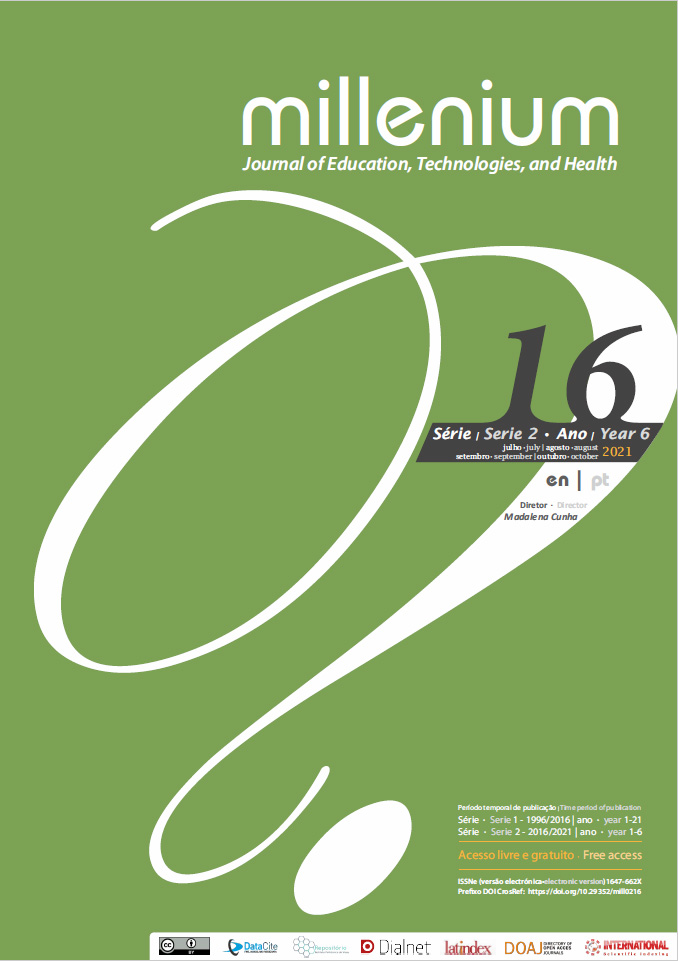Factors influencing simulated practice in nursing education
scoping review
DOI:
https://doi.org/10.29352/mill0216.24976Keywords:
nursing, simulation, practice guidelinesAbstract
Introduction: The development of a simulation scenario requires strategic planning to guide the simulated practice to contribute positively to the development of skills and a practice of excellence of future nurses.
Objective: To identify the factors that influence the construction of simulation scenarios in simulated nursing practice.
Methods: Scoping Review study conducted in the Scielo, CINAHL PLUS, GreenFILE, Lilacs, PubMed, RCAAP databases, with the Boolean phrase "Nursing AND Simulation AND Practice Guidelines". The inclusion criteria were defined as studies written in Portuguese, English, and Spanish with full text available and involving undergraduate nursing students, and therefore with adult participants over 18 years old.
Results: As a result of the research, 10 articles were included. In the studies, we identified factors that influence the construction of simulation scenarios among them, that balance between moments of clinical practice and discussion with the students, moments of reflection, the role of the facilitator, the facilitating communication/students, the clear definition of the objectives and the realism of the scenario.
Conclusion: Clinical practice in nursing has been subjected to a constant evolution, at a theoretical/scientific and practical level. The identification of factors influencing the construction of simulation scenarios in simulated nursing practice facilitates a greater improvement at a practical level and a substantial reduction of clinical errors, thus constituting an excellent contribution to Nursing Simulation.
Downloads
References
Coutinho, Verónica Rita Dias, Martins, José Carlos Amado, & Pereira, Maria de Fátima Carneiro Ribeiro. (2014). Construção e Validação da Escala de Avaliação do Debriefing associado à Simulação (EADaS). Revista de Enfermagem Referência, serIV(2), 41-50. https://dx.doi.org/10.12707/RIII1392
Costa, R., Medeiros, S., Martins, J., & Coutinho, V. (2018). A Simulação no Ensino de Enfermagem: Reflexões e Justificativas a Luz da Bioética e dos Direitos Humanos. Revista Académicas da Universidade do Chile, 24(1), pp. 31-38. available at https://revistas.uchile.cl/index.php/AB/article/view/49375/51850
Duarte, H., Sousa, P., & Dixe, M. (2017). Validação da versão portuguesa da escala de satisfação dos estudantes de enfermagem relativamente à simulação de alta-fidelidade (ESEE-SAF). Unidade de Investigação em Saúde da Escola Superior de Sáude do Instituto Politécnico de Leiria, pp. 185-196. Available at http://hdl.handle.net/10400.8/2889
Dubrowski, A., Alani, S., Bankovic, T., Crowe, A., & Pollard, M. (2015). Writing Technical Reports for Simulation in Education for Health Professionals: Suggested Guidelines. Cureus, 7(11), pp. 1-8. doi:10.7759/cureus.371
Fortin, M. -F., Côté, J., & Filion , F. (2009). Fundamentos e Etapas do Processo de Investigação. Loures: Lusodidacta.
Gamboa, F., Álvarez, J., Cepeda, R., & Gómez, J. (2019). Instructional Design Model Applied to a Virtual Guide in Clinical Simulation. Universitas Médica, 60(3), pp. 1-14. doi:10.11144/Javeriana.umed60-3.mdis
Herrera, C., Molina, N., & Becerra, J. (2015). Fortalecimiento de La Simulación Clínica como Herramienta Pedagógica en Enfermería: Experencia de Internado. Revista Cuidarte, 6(1), pp. 970-975. doi:10.15649/cuidarte.v6i1.161
Jeffrey, C., Mitchell, M., Henderson, A., Lenthall, S., Knight, S., Glover, P., . . . Groves, M. (2014). The value of best-practice guidelines for OSCEs in a postgraduate program in an Australian remote area setting. Rural and Remote Health, 14(3), pp. 1-9. doi:10.1016/j.nedt.2015.01.007
Jeffries, P. (2015). Signs of Maturity . . . Simulations Are Growing and Getting More Attention. Nursing Education Perspectives, 36, pp. 358-359. doi: 10.5480/1536-5026-36.6.358
Joanna Briggs Institute. (2013). JBI Levels ofEvidence. Acedido em: https://jbi.global/sites/default/files/2019-05/JBI-Levels-ofevidence_2014_0.pdf
Kaneko, R., & Lopes, M. (2019). Realistic health care simulation scenario: what is relevant for its design? Revista da Escola de Enfermagem da Universidade de São Paulo, 53, pp. 1-8. doi:10.1590/S1980-220X2018015703453
Mota, L., Jesus, A., Teixeira, C., Cabral, D., & Trindade, M. (2021). Eficácia da Simulação em Enfermagem na Aprendizagem dos Estudantes. Revista Millenium, 2(15), pp. 25-31. doi:10.29352/mill0215.21267
Page, M., McKenzie, J., Bossuyt, P., Boutron, I., Hoffman, T., Mulrow, C., . . . Moher, D. (2021). The PRISMA 2020 statement: an updated guideline for reporting systematic reviews. The BMJ, pp. 1-9. doi:10.1136/bmj.n71
Silva, A., Silva, G., & Belian, R. (2020). Simulação clínica e educação médica: relato de experiência sobre construção de um cenário de alta fidelidade. Revista de Saúde Digital e Tecnologias Educacionais, 5(1), pp. 99-111. doi:10.36517/resdite.v5.n1.2020.re9
Stephens, J., Brailey, H., & Platt, A. (2011). "Appearing the team": from pratice to simulation. International Journal of Therapy and Rehabilitation, 18(12), pp. 672-682. doi:10.12968/ijtr.2011.18.12.672
Torredà, M., & Collado, A. (2015). Simulation-Based Learning as a Tactic for Teaching Evidence-Based Practice. Worldviews on evidence-based nursing, 12(6), pp. 392-394. doi:10.1111/wvn.12107
Vuuren, V. J., Seekoe, E., & Goon, D. T. (2018). The Perceptions of Nurse Educators Regarding the Use of High Fidelity Simulation in Nursing Education. Africa Journal of Nursing and Midwifery, 20(1), 1-20. doi:10.25159/2520-5293/1685
Downloads
Published
How to Cite
Issue
Section
License

This work is licensed under a Creative Commons Attribution 4.0 International License.
Authors who submit proposals for this journal agree to the following terms:
a) Articles are published under the Licença Creative Commons (CC BY 4.0), in full open-access, without any cost or fees of any kind to the author or the reader;
b) The authors retain copyright and grant the journal right of first publication, allowing the free sharing of work, provided it is correctly attributed the authorship and initial publication in this journal;
c) The authors are permitted to take on additional contracts separately for non-exclusive distribution of the version of the work published in this journal (eg, post it to an institutional repository or as a book), with an acknowledgment of its initial publication in this journal;
d) Authors are permitted and encouraged to publish and distribute their work online (eg, in institutional repositories or on their website) as it can lead to productive exchanges, as well as increase the impact and citation of published work
Documents required for submission
Article template (Editable format)















